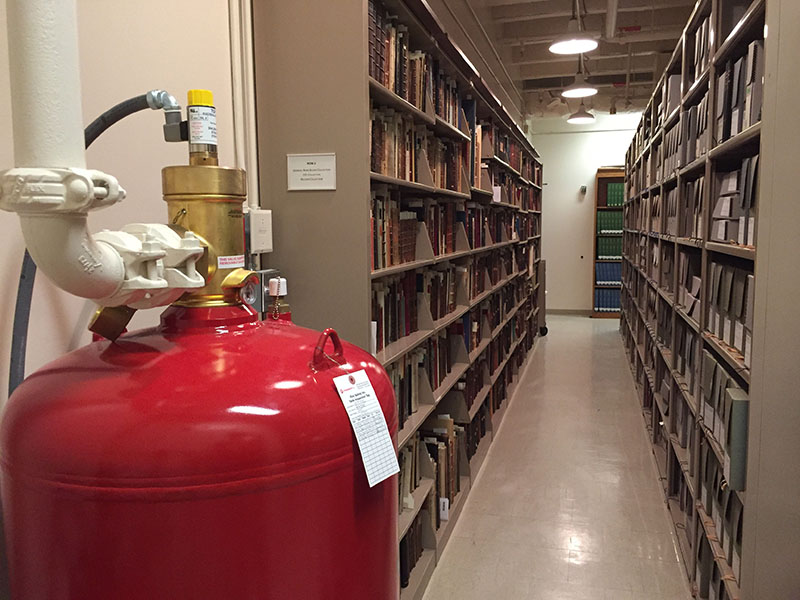
Nothing lasts forever, but archivists and librarians are dedicated to making sure some things last a very long time. Preservation Week is the perfect opportunity to learn more about what you can do to preserve your own favorite photos and important documents. Following a few simple guidelines can add decades to the life of a document.
Preservation is “the action of preserving from damage, decay, or destruction.” But entropy rules, and age and the very environment – light, fire, water, even air – can cause damage and decay.
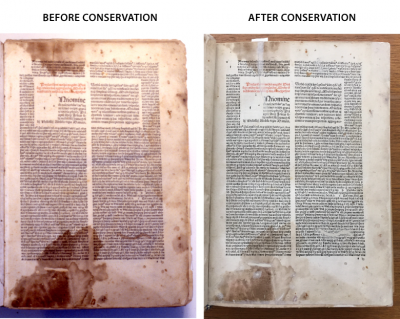
- Do what you can to minimize light exposure – keep paper and photographs out of direct sunlight.
- Air contains mold spores which thrive in high humidity, so don’t store anything you want to keep in a damp basement. A steady, comfortable humidity around 50% is best for most materials.
- Fire and water are obvious, but while water can be good to have during a fire it can be just as bad on paper. Boxes and enclosures can help to minimize damage from water, but be sure that humidity is not trapped inside along with your papers and photos.
At Becker Medical Library, our archivists and rare book librarians work to preserve all kinds of materials, chiefly paper, but also photographic prints, films, and negatives, plus artifacts with various fibers, plastics, and other man-made materials.
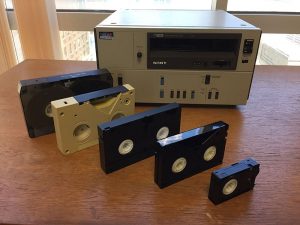 As if keeping a record of the past weren’t challenging enough, we now have modern data which exists only as an electronic signal of 0s and 1s. Archivists are already encountering challenges such as receiving discs and data storage devices for which they have no way to retrieve the data.
As if keeping a record of the past weren’t challenging enough, we now have modern data which exists only as an electronic signal of 0s and 1s. Archivists are already encountering challenges such as receiving discs and data storage devices for which they have no way to retrieve the data.
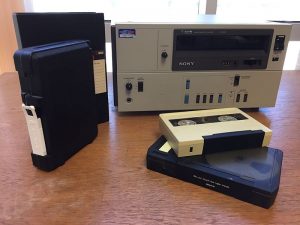 The multitude of media types is also a challenge. VHS and other magnetic tapes degrade with expected lifetimes of 30 to 40 years, even when stored under ideal conditions. CD-R and DVD-R discs are not much better. Players for these media, especially tapes, are increasingly hard to find, so family movies on VHS should definitely be digitized now for preservation purposes. But it’s unclear if converting them to today’s preferred digital video format will mean they can still be played 50 or 100 years from now.
The multitude of media types is also a challenge. VHS and other magnetic tapes degrade with expected lifetimes of 30 to 40 years, even when stored under ideal conditions. CD-R and DVD-R discs are not much better. Players for these media, especially tapes, are increasingly hard to find, so family movies on VHS should definitely be digitized now for preservation purposes. But it’s unclear if converting them to today’s preferred digital video format will mean they can still be played 50 or 100 years from now.
Copyright law has also failed to keep pace with digital preservation needs.
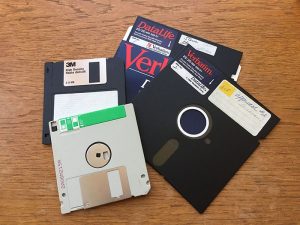 These are just some of the vast array of challenges that archivists and librarians have begun to address with the rise of the internet, big data and social media. Collaboration beyond the walls of the library will be required in order to continue preserving born-digital material as we’ve come to expect with paper and physical materials.
These are just some of the vast array of challenges that archivists and librarians have begun to address with the rise of the internet, big data and social media. Collaboration beyond the walls of the library will be required in order to continue preserving born-digital material as we’ve come to expect with paper and physical materials.
Format challenges aside, all archival material exists in physical space which is vulnerable to the elements. Fortunately, we have the benefit of world-class facilities here at Washington University in St. Louis. Inside large red tanks, like the one pictured at the top of this post, is our temperature- and humidity-controlled storage area’s first line of defense against fire. These tanks can disperse 3M Novec 1230 Fire Protection Fluid, a clear, colorless agent which will extinguish any fire. It is safe for use on paper and other materials. It does no harm to the environment, does not leave any residue and will not affect ink, dyes, paints or other media. We do have sprinklers, of course, just in case, but hopefully, will never use them.
